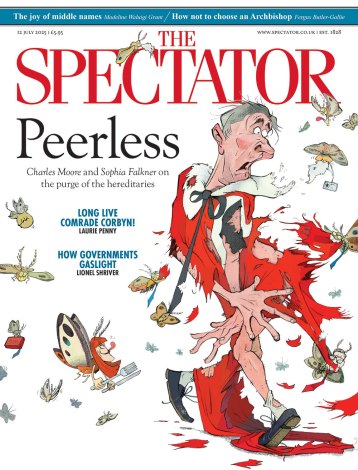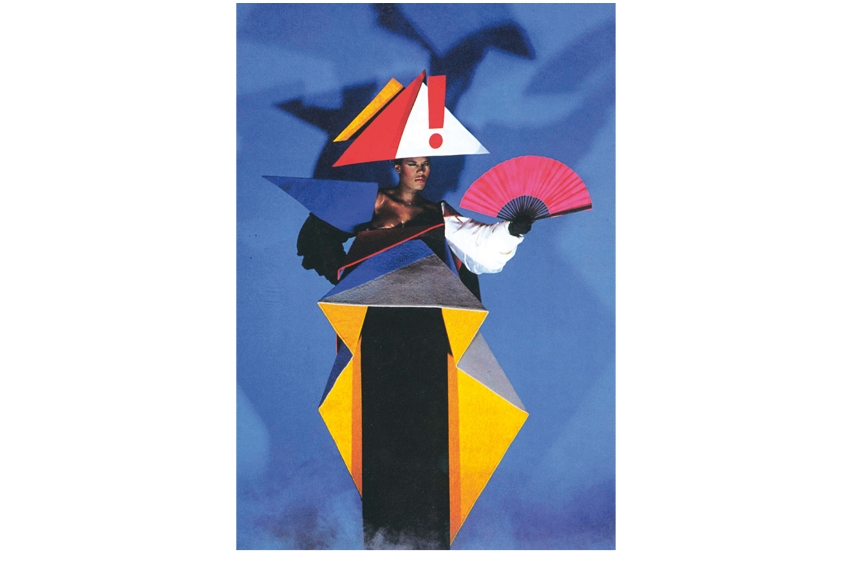Postmodernism is a term with a surprisingly long history. It was first used in the 1870s and was subsequently employed by dazed or disaffected commentators with some regularity throughout the first two thirds of the 20th century, until it became de rigueur in the ghastly decade of the 1970s. The architect Charles Jencks pronounced the death of Modernism at 3.32 p.m. on 15 March 1972, and Post-Modernism (hereinafter known as PoMo) was fairly, or unfairly, upon us. But what actually is it?
Essentially, it meant the end of all seriousness and the shunning of order, moderation and reason, the denial of a belief in the perfectibility of the human race and the merit in striving for something better. Encouraging the coexistence of all styles, PoMo offered a celebration of confusion, a glorification of pastiche and parody (very minor and parasitic art forms), and a wholesale and uncritical ‘anything-goes’ attitude that was dangerously asphyxiating to rational thought or more modest individual creativity. Supposedly subversive, it was actually chaotic and hopelessly juvenile.
Spectacle, brash humour, sensationalism, a bottomless pit of the tasteless, kitsch and tawdry — PoMo embraces all these with an abandon which is almost sexual in its intensity. There are some horrible things in this exhibition, and inevitably some rather good ones. Nearly everything by the brilliant Italian architect and designer Ettore Sottsass (1917–2007) is worth looking at, though some of his objects lose clarity and are too contrived. His cheerful ceramic totems would make rather good chimney pots, but his ziggurat teapots are plain silly. (Silliness is endemic to PoMo.) On the other hand, I loved his Murmansk centrepiece in electroplated nickel silver, and his variegated Casablanca sideboard.
Among the other objects to hold my attention were Richard Slee’s Picket Fence Vessel, the junk jewellery on a large and inventive scale by Bernhard Schobinger, Alison Britton’s deliciously squiffy Big White Jug, Adrian Saxe’s outrageously bobbly covered jar and three dinky little aluminium models of buildings by Philippe Starck.
Bricolage (literally: pottering about, doing odd jobs, used now for the reinterpretation of unlikely objects) gets utterly out of hand in PoMo, though it has moments of wit, especially in the early years before striving for effect became so desperate. Look, for instance, at the Adhocist Chair (1968), made from gas pipe, tractor seat and wheels. Incredibly uncomfortable, I’ve no doubt, but quite fun — for a few moments, at any rate; rather like the Consumer’s Rest chair, fashioned from a supermarket trolley. (Overheard exchange: ‘My sister has that exact same thing in her bedroom.’ ‘Really? Did she make it? It’s so cool.’) Few of these exhibits manage to exert a lasting appeal, and I remember seeing cheaper, nastier versions of many of the furniture designs abandoned in skips in the 1980s and 90s.
A large proportion of the show’s liveliness rests on installation: flashing lights, music, video screens and ludicrous costumes. There are some real self-inventive stars here, such as Andrew Logan, Leigh Bowery and Grace Jones, and Laurie Anderson gets a whole room to herself. (I saw a girl sitting rapt on the floor listening to ‘O Superman’, sucking her thumb contentedly.) There’s another room of 2D stuff: celebrations of The Face magazine, album covers, posters, photos. The chance for many people to revisit their recent past could well prove irresistible. Alternatively, we can all be reminded of the dangers of constructing a self through commodities. There are plenty of weird things to see, at any rate. As a friend said, she hadn’t been to the show yet but would take her children — it was about their level.
As a strong antidote or pick-me-up, let me recommend two exhibitions of painting which will stimulate and enrich rather than underwhelm the visitor. Ordovas is a major new gallery in the West End, set up by the redoubtable Pilar Ordovas, who has many years’ experience working in Post-War and Contemporary art at Christie’s and then Gagosian. Arranged over two floors at 25 Savile Row, opposite the vast new premises of Hauser & Wirth, Ordovas offers a handsome and flexible space which sets off its inaugural show to great effect. Irrational Marks: Bacon, Rembrandt (until 16 December) is a remarkable exhibition which investigates the influence of Rembrandt on Francis Bacon, focusing on Rembrandt’s ‘Self-Portrait with Beret’ from the Musée Granet in Aix-en-Provence. It’s an extraordinary achievement to have secured the museum loan of a Rembrandt, and Ordovas matches this with a key selection of Bacon paintings, backed up by archive material and film footage of Bacon in conversation. This is the kind of exhibition our national museums should be mounting; but once again the initiative is taken by a private gallery.
Most people who know anything about Bacon are familiar with his references to such Old Masters as Velázquez and Van Gogh, but his relationship with Rembrandt has never before been the subject of in-depth scrutiny. Yet Bacon much admired Rembrandt’s self-portraits, particularly the late ones, and often visited ‘Self-Portrait with Beret’ in Aix. He described this unusual and probably unfinished painting as having hardly any sockets to the eyes, and called Rembrandt’s late self-portraits ‘a tightrope walk between appearance and caricature’.
This, of course, is the same route that Bacon himself took, as can be seen in the half-dozen self-portraits gathered here. This is an excellent and thought-provoking display. A hardback catalogue (price £50) containing scholarly and informative essays on both Rembrandt and Bacon accompanies and extends the exhibition, maintaining the high standards of the whole enterprise. Ordovas is evidently a gallery to watch.
A contemporary painter showing in another recently opened Mayfair space is Simon Edmondson (born 1955), currently exhibiting at Agent Morton (32 Dover Street, W1, until 28 November). Edmondson first came to prominence in London in the 1980s at the Nicola Jacobs Gallery, and soon began showing in Berlin and New York. In 1991 he moved to Madrid where he still lives, and concentrated on consolidating his standing in Europe. His work hasn’t been much in evidence in England recently, so this exhibition of new works is most welcome. It consists almost entirely of large paintings in oil on paper, of slightly mysterious interiors, perhaps depicted after a disaster or glimpsed in a revealing but unusual state of disarray. Other paintings suggest the complex emotional activities of the bed chamber. All are constructed with great sensitivity to the expressive possibilities of paint. The tensions and Pyrrhic victories of the human spirit have rarely been so subtly suggested.






Comments